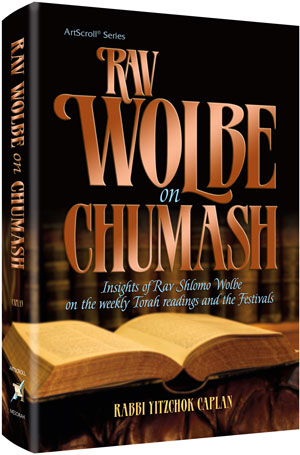Sunday, March 29, 2009
169 - Vayikra
Wednesday, March 18, 2009
168 - Vayakhel-Pekudei
Rav Wolbe cites two explanations offered by the meforshim on how the Mishkan succeeded in causing the Shechina to rest among Bnei Yisroel. The first explanation is offered by the Kuzari who explains that the rules of nature are in reality a manifestation of Hashem's command. Hashem created the world in a way that specific actions bring about certain desired results. When one plants a seed in the ground, a plant sprouts, while if one would do the exact same action upon a rock he would see no such results.
The Kuzari continues that the same holds true for the mitzvos. Mitzvos are the spiritual counterpart of physical nature. When they are performed exactly as Hashem commanded, it brings about the desired outcome; Hashem's Shechina is brought into the world. We do the "preparatory actions" through the performance of the mitzvos, and Hashem brings about the anticipated outcome.
Therefore, we do not need to try to understand why specifically a menorah, shulchan, aron and the other vessels are needed to bring the Shechina into this world. In order for the Shechina to be able to reside in an abode here on earth, specific conditions must be present. The conditions are the proper construction of the Mishkan and its vessels. If there is even one stone missing from the corner of the mizbeiach, the heavenly fire will not descend to consume the korbanos that lay upon it.
Spirituality is no less a reality than physicality. It is not enough to be a "Jew in our heart." Our goal is to connect to Hashem, and solely practicing yoga, meditation or any other human concocted idea will not bring about this desired result. The only way to accomplish this is through the meticulous performance of His mitzvos.
The second explanation is offered by the Sforno and others. They expound on how each vessel in the Mishkan represents a different quality needed in one's avodas Hashem. The combination of all these qualities creates an appropriate condition for Hashem's Shechina to reside on earth.
Rav Wolbe comments that with this approach, it is possible to understand that the entire creation is made up of symbols that represent spiritual concepts. Chazal tell us (Brachos 32a) that there is no artist like Hashem, for He has the ability to not only paint a picture but to breathe life into it too. Just as the artist's painting on paper represents objects found in this world, so too, everything that the Master Artist "paints" represents spiritual ideas and concepts. The Mekubalim explain that the right hand symbolizes mercy and the left hand symbolizes strict judgment, and therefore, the left hand is weaker than the right because Hashem's compassion is exercised to a greater extent than strict judgment. The same holds true for the all the limbs in a person's body; each one represents a way to understand Hashem more deeply.
The Reishis Chochma writes that it is difficult for one who is not married to get a true picture of what it means to love Hashem, for he hasn't experienced the love created through marriage. Rav Wolbe takes this idea a step further and suggests that it might be possible that Hashem created the concept of love between a husband and wife for this reason alone - to gain an idea of what it means to love Hashem.
Everything we observe in the creation can serve as a lesson in our avodas Hashem. It all depends on how you look at it.
Wednesday, March 11, 2009
167 - Purim
Thursday, March 5, 2009
166 - Tetzveh (Zachor)
Rashi explains the juxtaposition of the commandment to have honest measures with the commandment to remember our encounter with Amalek. "If you are dishonest with your weights and measures - fear an attack from your enemy, for it is written, 'Deceitful weights are an abomination to Hashem. . .The wicked one comes [and attacks, thereby] bringing [you] embarrassment'" (Mishlei 11, 1-2).
Rav Wolbe (Alei Shur vol. II pg. 463) quotes Rabbeinu Yonah who uncovers the deeper meaning behind this Pasuk in Mishlei. After all, what did Shlomo HaMelech add to the Torah's exhortation not to conduct business with faulty weights? Rabbeinu Yonah writes that the pasuk in Mishlei is informing us that even if one does not actually use faulty weights in his business dealings, the very existence of dishonest measures in one's house is an abomination to Hashem. The Gr"a adds, even if one weighs the merchandise with a faulty measure and then deducts the difference, he has not acted in accordance with Hashem's will, for "Hashem desires [specifically] a complete weight" (ibid).
Using deceitful weights causes one to distance himself from Hashem. Hence, such an object, even if it remains untouched, has no place in a person's house because the mere fact that one owns an item of deceit is an abomination in the eyes of Hashem. Particularly in our society where there are many abominations that abound, even if one were to bring them into his home without using them, it would still constitute a violation of this principle.

